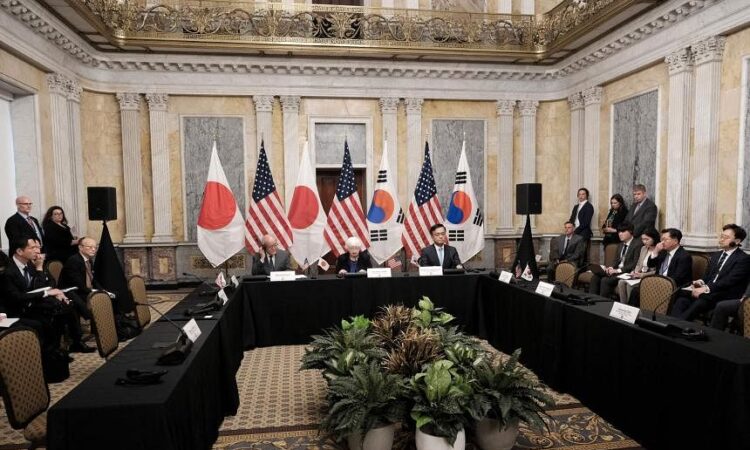
WASHINGTON – Finance leaders from the US, Japan and South Korea agreed to “consult closely” on foreign exchange markets in their first trilateral meeting on April 17, nodding to concern by Tokyo and Seoul over their currencies’ recent sharp declines.
The agreement in their first trilateral meeting came as receding expectations of a near-term US interest rate cut pushed the yen to 34-year lows, keeping markets on alert on the chance of yen-buying intervention by Japanese authorities.
“We will continue to cooperate to promote sustainable economic growth, financial stability, as well as orderly and well-functioning financial markets,” according to a joint statement released after the trilateral meeting.
“We will also continue to consult closely on foreign exchange market developments in line with our existing G-20 commitments, while acknowledging serious concerns of Japan and the Republic of Korea about the recent sharp depreciation of the Japanese yen and the Korean won,” it said.
The dollar slid to an intraday low of 154.18 yen after the statement, before rebounding to 154.37 on April 17.
Washington’s acknowledgement over the currency concerns of Tokyo and Seoul may help underpin the yen and won by keeping traders on edge over the chance of intervention, analysts say.
Ms Helen Given, a currency trader at Monex USA in Washington, said the agreement would lay the groundwork for intervention by Japanese authorities.
“While I don’t see a statement like this being enough to boost the yen and avoid an intervention, the language used there is pretty strong and I wouldn’t be surprised to see some concrete moves come out of Japan before the week is out,” she said.
Finance leaders of the Group of 20 (G-20) major economies have a long-standing agreement that excessive exchange-rate volatility and disorderly currency moves were undesirable.
Tokyo has argued that this G-20 agreement gave it freedom to intervene in the currency market to counter excessive yen moves.
But intervention could be costly with no guarantee it could reverse the current strong-dollar tide, which is driven by the big gap between US and near-zero Japanese interest rates.



